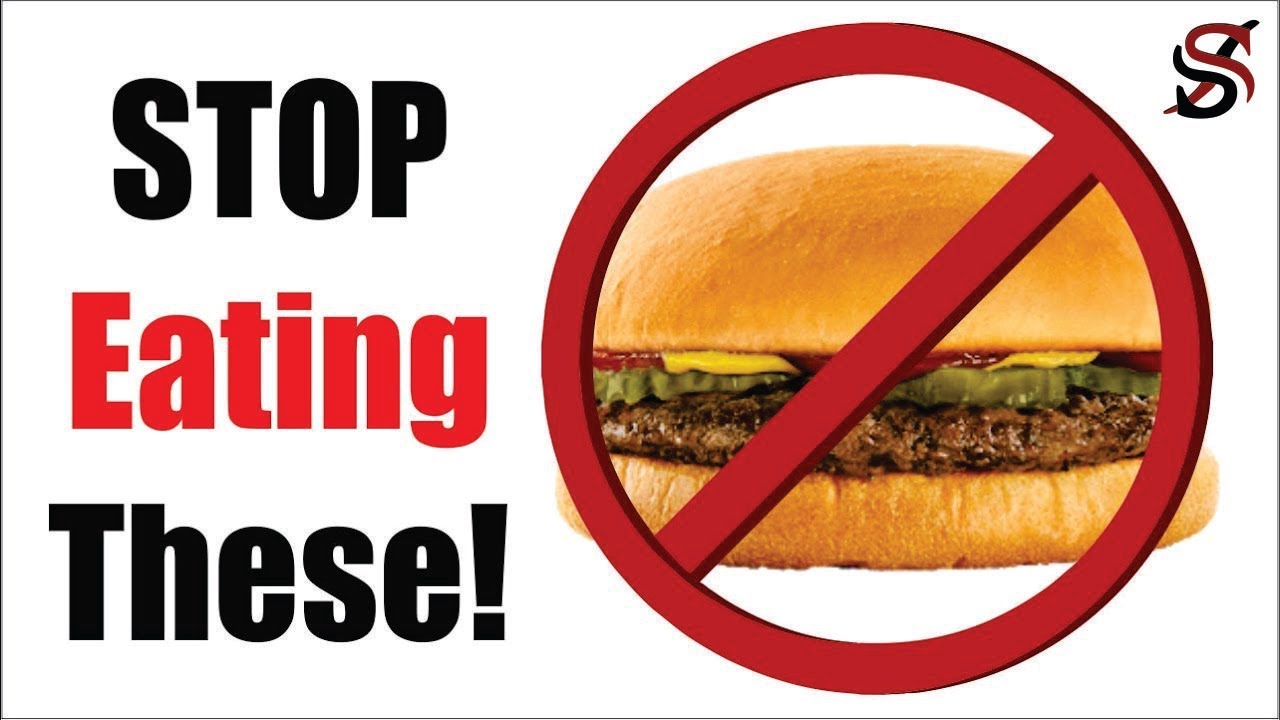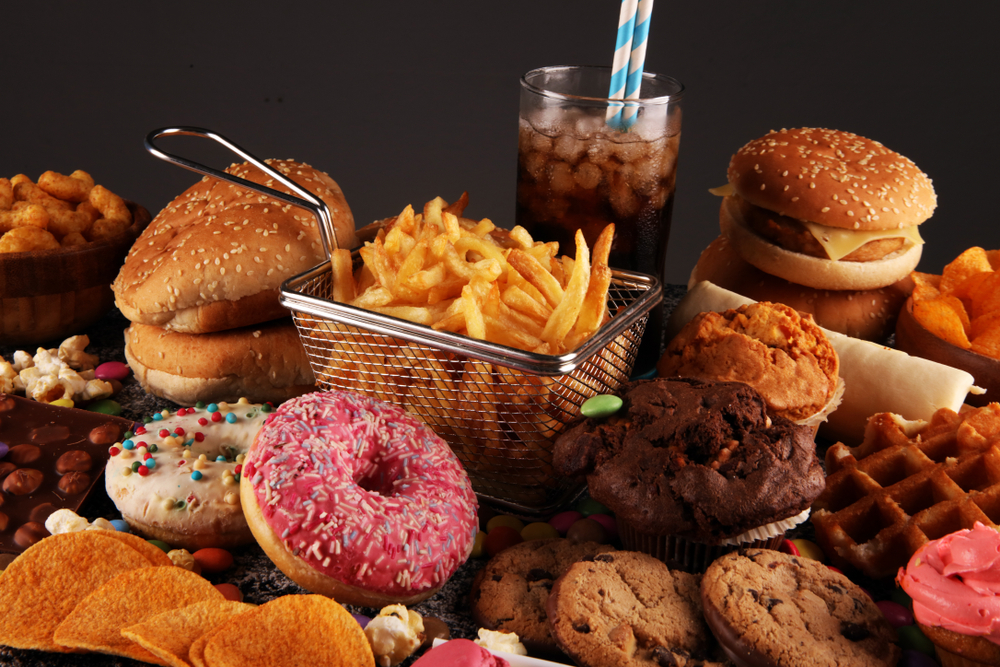
There are many things you can do to keep your diet full of nutritious and tasty foods, but there are also a lot of unhealthy healthy foods that you probably don't know about. Calories aren't everything but they are essential. More important than the calories is the nutritional content and ingredients. You can also replace processed foods with whole-grain alternatives to make some lifestyle changes. Here are some of our top picks. You will be healthier if you eat more than one type of food.
Avoid sugary snacks and drinks. Added sugars and fats are bad for your overall health. Most store-bought muffins contain little more than a muffin shell. Don't eat "healthy" frozen dinners. They're full of sugar and preservatives. Most desserts made without fat or gluten are low in nutrients. Many so-called healthy foods are high in artificial junk. High-GI fruits like bananas and mangos are good sources of natural fiber, which is essential to our bodies.
Choose healthy foods that are low in fat, sugar, or both. Those that are high in these nutrients are considered unhealthy. Avoiding them is better than eating too many. If you are looking for a tasty treat, go for something healthier. Organic and free-range are the best options. If in doubt, talk to your doctor. It's easy and simple to switch to healthier eating habits. It doesn't need to be difficult, all you have to do is a little research and effort.

Try to eat a wide variety of healthy foods in the diet. Eat more fruits and veggies than you usually do. They are better for your health in the long-term. You don't have to be a calorie-monster in order to reap the health benefits of healthy food. There are many options to increase your intake of healthy foods without feeling hungry. Balance between healthy and unhealthy foods is the best way to lose weight while staying healthy.
While most fast-food chains are trying to promote themselves as health-conscious consumers, they should not be confused by the word "healthy" on the packaging. Even "healthy" foods contain sugar substitutes that can actually increase caloric intake and increase the risk of diabetes. Those with healthy eating habits should avoid unhealthy foods and stick to whole foods. There are many things you can do to make your food more nutritious. You just need to make healthier choices.
Another example of a fake health food is plant-based foods. They're not real meats. These foods can be made to look like meat and have high levels of fat and sodium. These foods are not good choices for your diet. You should eat whole, nutrient-dense food to avoid any potential health problems. It's important to make sure you have the right balance of healthy and unhealthy foods in your diet.
Organic or raw food are a healthier option. Many of these foods are low-fat and rich in antioxidants. They're rich in vitamins C & A. They are low calories, making them an ideal choice for those suffering from diabetes. Follow the advice of your doctor to get the best results. These foods are best for your body. These foods will help to maintain normal blood sugar levels.

Some of the more popular types of yogurts are less healthy. Most yogurts contain high levels of sugar and flavor. You can find low-fat yogurt that has only 15 grams sugar per serving. This is still a lot. Purchase the unsweetened option to get low fat milk. You can also choose non-fat frozen cream instead of icecream.
High-fat foods should be avoided, but you shouldn't overlook the fact that these foods are rich in vitamins and fiber. Low in sugar and at least three grams protein bars are best. You want a healthy energy bar that has minimal ingredients and contains less than 10g sugar. This will help to reduce weight and improve your general health. You'll be grateful later!
FAQ
How much should you weigh for your height and age BMI calculator & chart
A body mass index calculator (BMI) is the best way to find out how much weight you should lose. A healthy BMI range should be between 18.5 and 24,000. To lose weight, you should aim for a loss of 10 pounds per year. Simply enter your height, weight and desired BMI into the BMI calculator to calculate it.
This BMI chart shows you if it is possible to identify if you are either overweight or obese.
What is the difference between sugar and fat?
Fat is an energy source from food. Sugar is a sweetener found in fruits, vegetables, and other foods. Both fats, as well sugars, provide the same number calories. But fats are twice as calories as sugars.
Fats are stored in the body and contribute to obesity. They cause cholesterol buildup in arteries which may lead to heart attacks and strokes.
Sugars provide instant energy and are rapidly absorbed by the body. This causes blood sugar levels to rise. High blood glucose levels are dangerous as it can increase the likelihood of developing type 2 diabetes.
What is the difference in calorie and kilocalories?
Calories are units that measure how much food has energy. Calories is the unit of measurement. One calorie is the amount of energy required to heat one gram water one degree Celsius.
Kilocalories can also be used to refer to calories. Kilocalories are measured in thousandths of a calorie. 1000 calories equals 1 kilocalorie.
Is cold an indication of a weaker immune system?
It has been said that there are two types of people on the planet: those who love winter, and those who don't. You might wonder why you feel so miserable in the cold, no matter how much you love or hate winter.
The reason is simple: Our bodies are made to function well in warm temperatures. Hot climates are where our food sources are most plentiful, and we evolved to thrive there.
Now, however, we live in a completely different environment to how our ancestors lived. We spend much more time indoors, often exposed to extreme temperatures (cold and heat), and we eat foods that are processed rather than fresh.
This means that our bodies aren’t used to these extremes. That means that when we do venture outdoors, we're left feeling tired, sluggish, and even sick.
These effects can be reversed, however. You can combat these effects by making sure you are well-hydrated all day. You can help flush toxins out of your body by drinking plenty of water.
Also, ensure you eat healthy food. Consuming healthy food helps maintain your body's optimal temperature. This is especially helpful for people who spend a lot of time indoors.
It is worth taking a few extra minutes each day to meditate. Meditation helps to calm your mind and body which can make it easier to deal stress and illness.
Statistics
- WHO recommends reducing saturated fats to less than 10% of total energy intake; reducing trans-fats to less than 1% of total energy intake; and replacing both saturated fats and trans-fats to unsaturated fats. (who.int)
- nutrients.[17]X Research sourceWhole grains to try include: 100% whole wheat pasta and bread, brown rice, whole grain oats, farro, millet, quinoa, and barley. (wikihow.com)
- The Dietary Guidelines for Americans recommend keeping added sugar intake below 10% of your daily calorie intake, while the World Health Organization recommends slashing added sugars to 5% or less of your daily calories for optimal health (59Trusted (healthline.com)
- According to the Physical Activity Guidelines for Americans, we should strive for at least 150 minutes of moderate intensity activity each week (54Trusted Source Smoking, harmful use of drugs, and alcohol abuse can all seriously negatively affect your health. (healthline.com)
External Links
How To
What does the meaning of "vitamin?"
Vitamins are organic compounds found naturally in food. Vitamins are necessary for us to absorb nutrients in the foods we consume. Vitamins are not made by the body, so they must be obtained through food.
There are two types: water-soluble and fat-soluble vitamins. Water soluble vitamins dissolve easily in water. Examples include vitamin C,B1 (thiamine), B2 (riboflavin), B3 (niacin), B6 (pyridoxine), folic acid, biotin, pantothenic acid, and choline. Fat-soluble vitamins are stored in the liver, fatty tissue and kidneys. These include vitamin D, E and K, as well as beta carotene.
Vitamins are classified according their biological activity. There are eight main groups of vitamins.
-
A – Essential for normal growth, and the maintenance of good health.
-
C – essential for proper nerve function.
-
D - Vital for healthy bones and teeth
-
E is required for good vision and reproduction.
-
K – Required for healthy nerves & muscles.
-
P - essential for strong bones, teeth and tendons
-
Q - aids digestion, absorption and absorption iron
-
R – Required for the formation of red blood vessels.
The recommended daily allowance of vitamins (RDA), varies according to age, gender, physical condition, and other factors. The U.S. Food and Drug Administration, (FDA), sets the RDA value.
For adults 19 years and over, the RDA of vitamin A is 400mg per day. However, pregnant women need 600 micrograms per day because it is important for fetal development. Children ages 1-8 require 900 micrograms per day. Infants below one year old require 700mg per day. But, between 9 months to 12 months, the amount drops to 500mg per day.
Children aged between 1-18 years require 800 micrograms of sugar per day, while overweight children need 1000 micrograms. Children who are underweight receive 1200 micrograms every day to meet their nutritional requirements.
Children 4-8 years old who have anemia must consume 2200 micrograms of Vitamin C daily.
2000 micrograms daily is required for adults over 50 to maintain their general health. Mothers who are pregnant, nursing, or have a high nutrient need will require 3000 micrograms a day.
Adults over 70 need 1500 micrograms daily, as they lose 10% of their muscle every ten years.
Women who are pregnant or lactating need more than the RDA. Pregnant woman need 4000 micrograms daily in pregnancy, and 2500 per day after childbirth. Breastfeeding mothers need to consume 5000 micrograms every day when breastmilk has been produced.